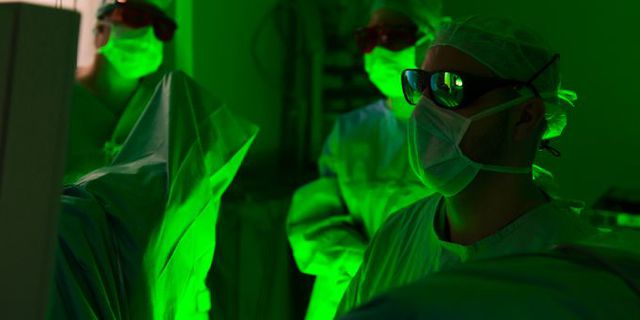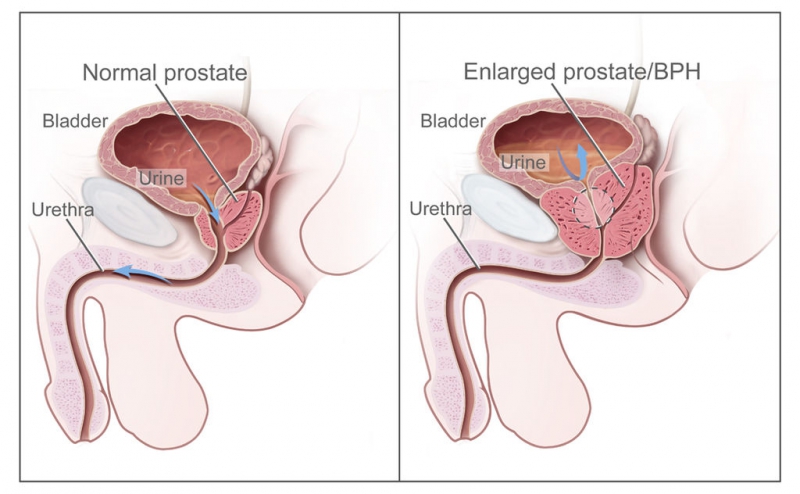Non-cancerous prostate enlargement, also known as benign prostatic hyperplasia (BPH), is a common condition that affects many men, especially as they grow older. In most cases, it does not pose a serious threat to health. It can, however, result in annoying symptoms that may need to be managed with professional medical treatment.
If the prostate becomes enlarged, it can place pressure on the bladder and urethra (the tube through which urine passes) and cause pain when passing urine. Surgery is usually only necessary if the patient is suffering from moderate-to-severe urinary symptoms that cannot be managed by medication alone.
Research has shown that an enlarged prostate does not mean that a patient has an increased risk of developing prostate cancer.
While open surgery with high risks for complications and long recovery times used to be the only option, now there are a variety of minimally-invasive procedures available to treat an enlarged prostate. Each procedure involves widening the passageway to allow urine to flow through more freely, though each uses different instruments and techniques.
TURP: the gold standard of prostate surgery
Transurethral resection of the prostate, known as TURP, is by far the most commonly-performed type of prostate surgery. In this procedure, a surgeon carves away at overgrown prostate tissue using a specialized medical instrument.
The surgeon first inserts a tiny camera via the urethra in order to view the prostate, then inserts an instrument called a resectoscope. With the resectoscope, the surgeon uses an electrical current to remove the overgrown tissue and cauterize the tissue to decrease bleeding. They then flush the area with a solution to remove leftover pieces of tissue.
TURP is an inpatient procedure with similar risks as other types of surgery, including bleeding and infection. It is a highly effective procedure and only a small percentage of patients need to have another prostate surgery after undergoing TURP. Minimally invasive procedures, however, are slowly gaining popularity as technology develops to make them more effective.
Laser surgery: less invasive and just as effective

GreenLight Laser Photoselective Vaporization of the Prostate (PVP) involves using a high-energy laser to selectively vaporize excessive prostate tissue. Less invasive than TURP but more effective than other prostate surgeries, it has become a preferred method of treatment in the past few years.
During this procedure, a surgeon threads a fiber optic device into the prostate via a tube in the urethra. The device creates high-intensity pulses of light, which the surgeon targets at the obstructing tissue. This “melts” the tissue, simultaneously vaporizing and cauterizing it so that the tissue is gone and blood loss is minimal. Patients may be sent home later the same day or spend overnight in the hospital.
Compared to TURP, the GreenLight procedure has less blood loss, fewer risks of complications and shorter recovery times as compared to TURP, yet studies show it is similarly effective. Just as with TURP, very few patients need another prostate operation after the GreenLight procedure.
Patients at Premier Healthcare have had positive experiences with the GreenLight procedure.
Similar laser prostate surgeries include Holium laser ablation (HoLAP), which is essentially identical to GreenLight surgery except for the type of laser used to vaporize the tissue, and Holmium laser enucleation (HoLEP) and Thulium laser enucleation (ThuLEP), in which a laser cuts away instead of vaporizes excess tissue.
Other treatments for an enlarged prostate
Several other more gentle procedures for benign prostate enlargement are available at many hospitals. One such procedure, TUMT, involves using microwave radiation to destroy the obstructing prostate tissue. In a different procedure, TUNA, two needles shoot low-level radio waves to heat and kill prostate cells. And in another, TUIP, an electric current or laser is used to make a small incision where the prostate meets the bladder. Rather than removing tissue, TUIP functions by cutting the muscles to relax the opening to the bladder.
While all of these procedures are significantly less invasive than TURP, they may not be as effective as TURP, particularly in more severe cases. Ultimately a trained medical professional will determine which treatment is most effective for each case based on individual symptoms.
As with all surgeries, each technique comes with possible complications that must be carefully considered before undergoing the procedure. Complications for prostate surgery are rare, but may include erectile problems, urinary incontinence or difficulty urinating, retrograde ejaculation and urinary tract infections. It is common for patients to need a urinary catheter for at least a short time after undergoing prostate surgery. In addition, TURP may sometimes lead to a dangerous loss of blood.
Premier Healthcare can put you in contact with an expert urologist in Germany who can help decide which treatment option is best for you. Contact us to find out more about prostate surgery in Germany.

